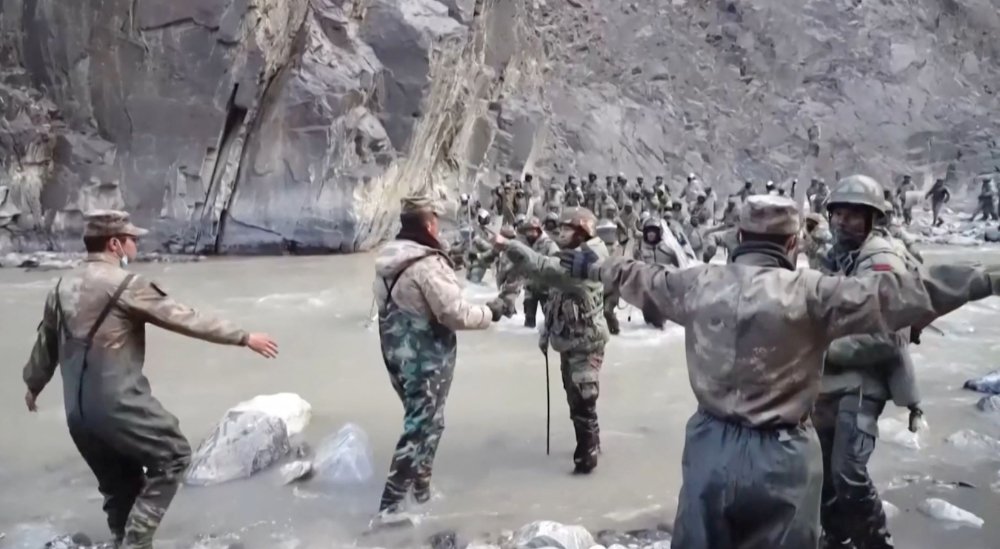NEW DELHI: The withdrawal of Indian and Chinese troops from an undemarcated border area in the western Himalayas creates a “diplomatic opening” but does not end the two-year dispute between the two countries, experts said on Sunday.
Soldiers from the two nuclear-armed neighbors clashed in the Galwan area of the Ladakh region in June 2020, when at least 20 Indian and four Chinese soldiers were killed in hand-to-hand fighting. The incident escalated tensions between the Asian giants and was their worst border clash since 1967.
India and China share an undemarcated 3,800-kilometer border, and their senior military commanders have held 16 rounds of meetings since the 2020 clash, which prompted New Delhi to move some 50,000 troops along contested areas in Ladakh to match China’s military deployments. Some of the areas are at altitudes of over 4,572 meters, where scarce oxygen and freezing winter temperatures can be life-threatening.
The two countries announced earlier this week that their troops would withdraw from the area of Gogra-Hotsprings. The latest agreement will also see “all temporary structures in the area erected by both militaries” dismantled by Sept. 12, India’s Foreign Ministry spokesperson Arindam Bagchi said in a statement.
The pull-out comes ahead of the Shanghai Cooperation Organization meeting in Uzbekistan next week, which Indian Prime Minister Narendra Modi and Chinese President Xi Jinping are expected to attend.
The disengagement is “symbolic,” Delhi-based foreign policy expert Mohan Guruswamy told Arab News, and conveyed the “intention of both sides to create a better condition for discussion.”
“This is just to create a diplomatic opening for Modi and Xi Jinping to happily meet or politely meet,” Guruswamy said.
Gogra-Hotsprings is an area where both sides have conducted patrols, he explained, and the disengagement means that the troops will no longer be face-to-face with one another.
“Overall it does not change anything, the border is disputed,” Guruswamy said. “There are many more steps to be taken for full disengagement. There’s a long way to go before the trust deficit is addressed. This is just a first step.”
Manoj Kewalramani, chairperson of the Indo-Pacific Research Program and a China Studies fellow at Bangalore-based think tank Takshashila Institution, said this week’s disengagement is “not de-escalation,” as tens of thousands of troops remained at the disputed border.
“What we have today is simply a step back from eyeball confrontation,” Kewalramani told Arab News. “We are far from any sense of normalcy.
“I see this as a positive development in that, today, both sides have disengaged from friction points, but this is not a return to normalcy and nor is it a return to the status quo ante,” Kewalramani continued. “The disengagement, however, does create some room for both Xi Jinping and Narendra Modi to engage politically at the SCO summit.”
Dr Manoj Joshi of Delhi-based think tank Observer Research Foundation told Arab News that the troops’ disengagement will “create (a) no-patrol zone,” but said the development would have been more significant if disengagement took place in Depsang — which covers thousands of kilometers — rather than the smaller Gogra-Hotsprings area.
“If this decision is to facilitate a meeting between Modi and Xi, then it’s a good idea,” Joshi said. “Political issues can be resolved by political leaders. So far, they have not been able to talk to each other. If this is a pretext to talk, then it’s fine.”




